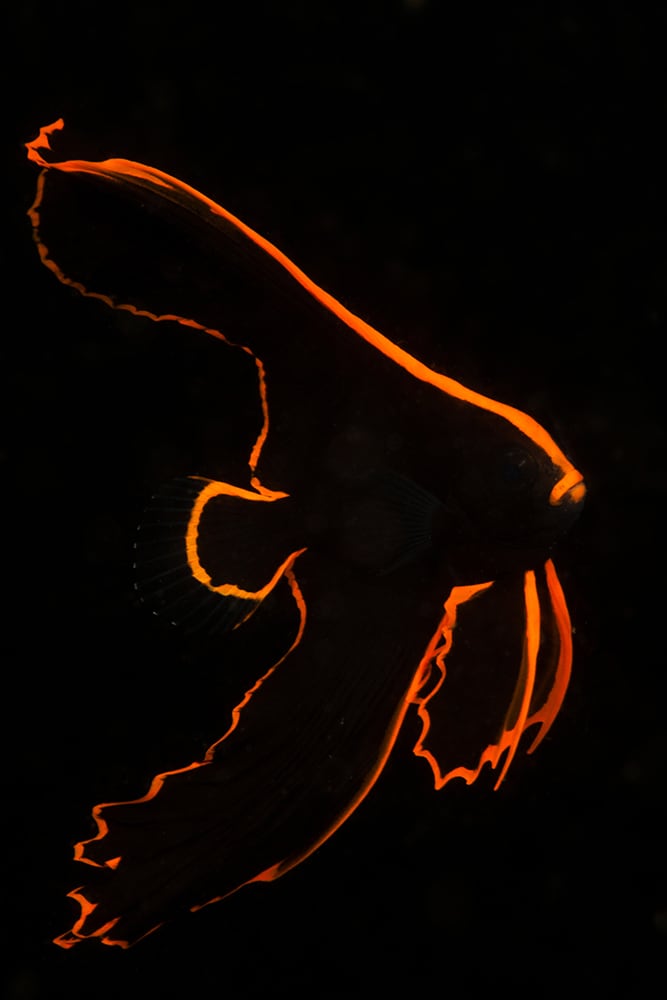The dusky batfish is like a phoenix rising from the ashes

Bec Crew
Bec Crew

A MEMBER OF the spadefish family (Ephippidae), named for their wide, flat, and often triangular shape, the dusky batfish (Platax pinnatus) is one of five known species of batfish in the world.
Sadly, this striking gold and black visage fades once the dusky batfish grows into its mature form. As an adult, the species retains its smoky colouring, settling on a more silver than black shade, and its gold turns to yellow.
Found throughout the tropical West Pacific, the dusky batfish has a wide range in Australian waters, from south-west Western Australia, to up around the northern coast and down around the central coast of New South Wales.
Its unusual appearance as a juvenile is a beautiful example of mimicry. It looks just like the Pseudoceros flatworm – a strongly toxic species that presents an unattractive prospect for any would-be predators.
For comparison, here’s a young dusky batfish:

And here’s the Pseudoceros flatworm:
You can see the comparison even more strongly when you see the dusky batfish fluttering among the coral:
The mimicry is so good, it fools even the experts, as the late John Randall, a leading authority on coral reef fishes, admitted in this 2005 paper.
The dusky batfish doesn’t just look spectacular – it’s a helpful little fish, too.
In 2005, scientists from James Cook University in Queensland ran an experiment to see which reef fish could clear the Great Barrier Reef of the great swathes of seaweed and algae that crowds out the coral.
While the parrotfish and surgeonfish struggled to put a dent in the amount of seaweed they encountered, the dusky batfish halved the amount of seaweed within 5 days, and cleared it completely in eight weeks.
“Worldwide, coral reefs are in decline,” one of the team, Dave Bellwood, said at the time. “Commonly this takes the form of the coral being smothered by weedy growth, a transition known as a phase-shift, which is very hard, if not impossible, to reverse.”
The bad news is that dusky batfish are quite rare around the Great Barrier Reef, so researchers are continuing the search for species that can assist in efforts to bolster coral ecosystems.

